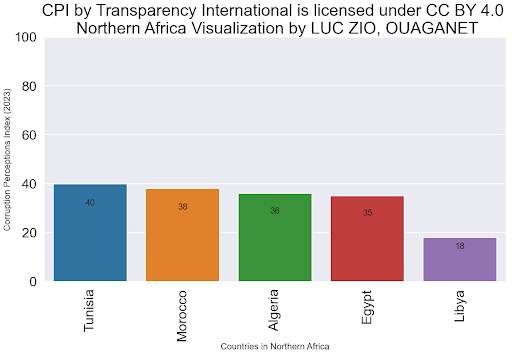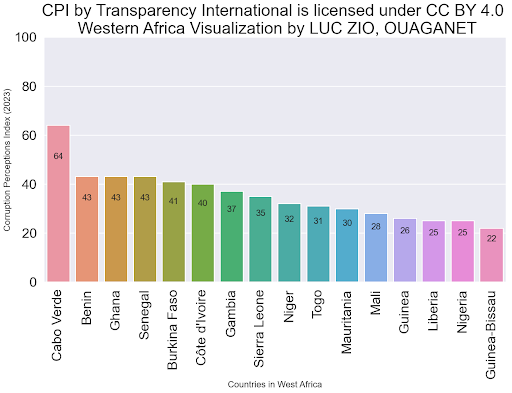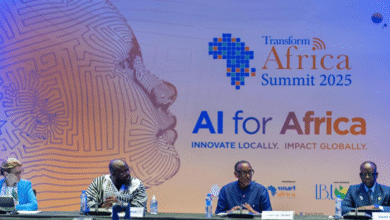
By Luc Zio*
Exploring Regional Disparities in Africa’s Corruption Perceptions Index Through Data Visualization
The goal of this article is to analyze global Corruption Perceptions Index (CPI) data, with a specific focus on Africa, a continent where extreme poverty remains widespread. Unfortunately, much of this human suffering is deeply rooted in public corruption.
To conduct this analysis, I have adopted the African Union’s regional classifications, which divide the continent into Northern, Eastern, Western, Central, and Southern regions. This framework allows for a comparison of CPI score distributions within each region and between regions, providing insight into corruption perceptions across Africa.
The data for this analysis comes from Transparency International (https://www.transparency.org/), a global non-profit organization dedicated to fighting corruption and promoting transparency, accountability, and integrity across governments, businesses, and civil society. The data I am using for this analysis is the 2023 CPI results (https://www.transparency.org/en/cpi/2023).
Licensing information: Corruption Perceptions Index by Transparency International is licensed under CC BY 4.0
According to Transparency International website, « The Corruption Perceptions Index (CPI) scores and ranks countries around the world based on how corrupt their public sector is perceived to be. The scores represent the views of experts or business surveys, rather than the general public. The CPI ranks 180 countries and territories around the globe by their perceived levels of public sector corruption, scoring on a scale of 0 (highly corrupt) to 100 (very clean).”
Key insights from descriptive statistics analysis of corruption perceptions index (2023)
Of the 180 countries with CPI scores, only 32% of the countries score 50 or higher, including both developed and developing nations. However, when the threshold is raised to a CPI score of 70, the percentage drops sharply to just 13%. These figures highlight the pervasive perception of corruption globally, affecting not only poor and developing nations but also wealthier countries in the world.
In Africa, the situation is more alarming: only 9% of the countries have a CPI score of 50 or more, and a mere 2% score above 70. While corruption is a global issue, its effects are far more damaging in developing nations, particularly in Africa. Unlike in developed countries, where essential services like education, healthcare, and security remain accessible to people despite corruption, many African countries struggle due to the overwhelming dominance of the public sector. This leads to poor or no access to education, lack of infrastructure, crumbling infrastructure when they exist, and diminished quality of life, with corruption in the public sector deeply impacting everyday lives.
Analysis of Africa corruption perceptions index scores
The African countries were grouped based on the African Union’s regional classifications, rather than the United Nations’, which places South Sudan and Sudan in Northern Africa instead of Eastern Africa.

Observations from the 2023 CPI Box Plot
From the 2023 CPI box plot, several key observations can be made about African regions:
- Median CPI scores across all regions in Africa are below 50.
- Three countries stand out as outliers in terms of CPI scores:
- Seychelles (Eastern Africa): With a score of 71, Seychelles is the highest-performing country in Africa and a positive example of relatively low corruption.
- Cabo Verde (Western Africa): With a score of 64, it is another standout, though slightly lower than Seychelles.
- Libya (Northern Africa): With a score of 18, Libya is another extreme outlier, reflecting the severe perception of corruption in the public sector, worsened by the instability following the ousting of Muammar Gaddafi.
- Northern Africa shows less variability in CPI scores, except for Libya, which significantly drags down the region’s average due to its post-war corruption crisis.
- Eastern and Western Africa exhibit greater variability in CPI scores compared to other regions.
- Only two African countries have CPI scores of 60 or above in 2023: Seychelles (71) and Cabo Verde (64).
- In Central Africa, no country has a CPI score above 40, highlighting the deep-rooted perception of corruption in the public sector in this region.
- The perception of public corruption in Africa is widespread and is not limited to Sub-saharan Africa.
Regional distributions of CPI (2023) scores
Northern Africa:
This region encompasses the African continent, excluding Sub-Saharan Africa. While much attention is often given to the challenges facing Sub-Saharan Africa, Northern Africa is not immune to issues such as public sector corruption. In fact, every country in Northern Africa has a corruption perception score of 40 or below, indicating significant concerns in this area.

Southern Africa:
Botswana has always been a good example in terms of the perception of corruption in the public sector in Africa. For many years that country has also figured on the top list of model countries in Africa.

Western Africa:
Cabo Verde stands out as a positive example of low perceived corruption in the public sector in Western Africa. If other countries in the region were able to effectively address corruption, they could significantly improve living conditions and infrastructure for their citizens.

Eastern Africa:
Seychelles, Rwanda and Mauritius stand out as relatively positive examples of low perceived corruption in the public sector in Eastern Africa.

Central Africa:
The paradox here is that the region has all sorts of natural resources and minerals, yet the data indicate all countries perform very low (less than 35) with respect to the CPI scores.

Conclusion
In Chinua Achebe’s novel « Things Fall Apart », a character wisely observes, « I cannot live near a river and wash my face with spittle. » Unfortunately, this sentiment resonates with the reality for many in Africa, where abundant natural resources—minerals, oil, forests, and fertile land—are often mismanaged or squandered, largely due to corruption among those in positions of power within the public sector. The suffering caused by extreme poverty and the poor state of infrastructure—such as roads, hospitals, clinics, and schools—can often be traced back to public corruption.
*General Manager, OUAGANET






